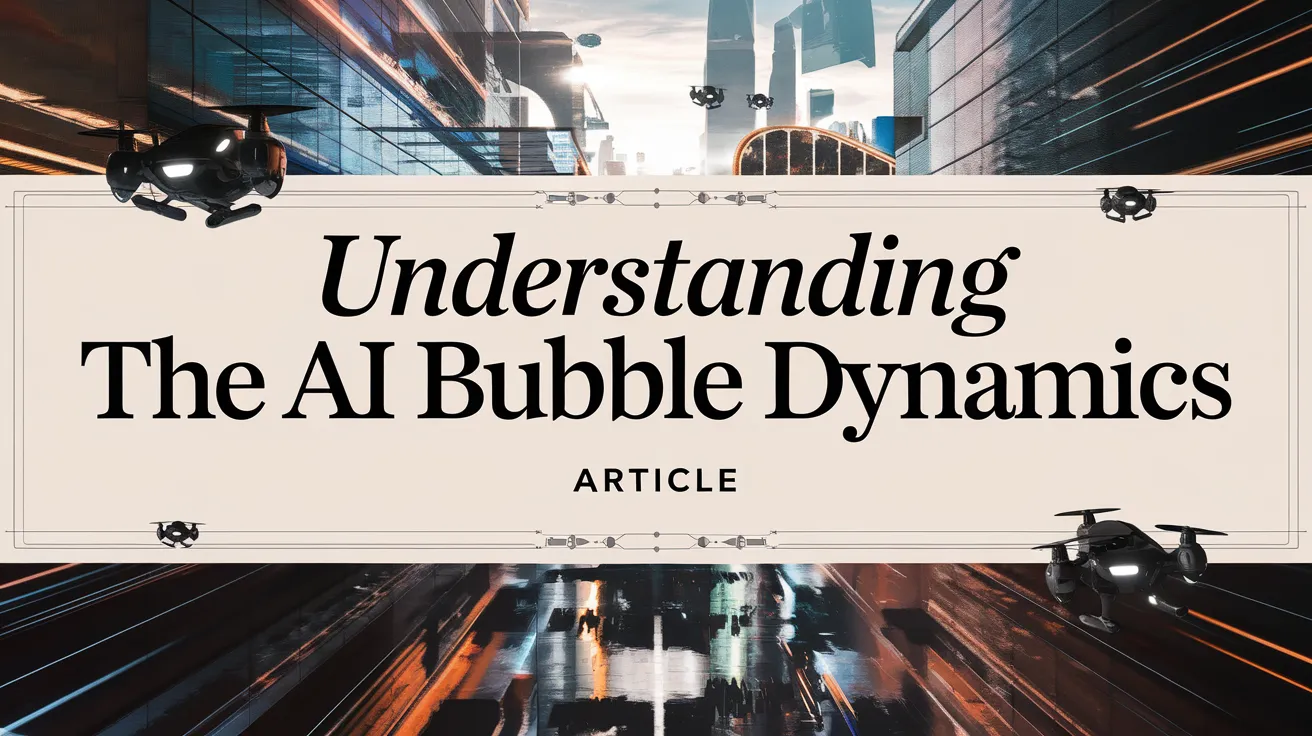Understanding the AI Bubble Dynamics

Artificial intelligence (AI) is viewed by some as the most important technology of the 21st century, while others argue it resembles an undeniable economic bubble. This divergence reflects the complexities of the current technological landscape, paralleling historical economic phenomena such as the 19th century railroad and the broadband internet expansion of the 20th century. In essence, AI is poised for an initial rise, followed by a likely crash, before it ultimately reshapes our world.
The $400 Billion Question: Infrastructure Spending on AI
The sheer scale of investment in AI infrastructure is staggering, with projections indicating that tech companies will spend approximately $400 billion in 2025 alone. This spending marks a new milestone in corporate expenditures, surpassing even monumental historical investments like the Apollo program, which allocated about $300 billion (adjusted for inflation) over a decade. AI development, however, compels companies to invest akin to launching a new Apollo mission every ten months, raising pressing questions about the sustainability of such commitments.
The Disconnect: AI Investment Versus Consumer Spending
As projections for AI capital expenditures in the U.S. loom over $500 billion in the coming years, an alarming disparity emerges: American consumers are projected to spend only $12 billion annually on AI services—roughly equivalent to the GDP of Somalia. This contrast illustrates a profound disconnect between escalating visions of AI’s potential and the harsh reality of consumer spending and utilization, even suggesting a decline in AI usage among large corporations still deciphering the financial viability of language models.
Signs of Trouble: The Anatomy of Economic Bubbles
Every economic bubble has its telltale signs, and the current landscape is no exception. Recent investments, such as the unprecedented $2 billion seed funding for Thinking Machines, raise eyebrows when the startup has yet to launch a product or clarify its ambitions. Such irrational exuberance evokes memories of past bubble dynamics where capital flowed without substantial foundations. Moreover, current market trends reveal an anomaly; stock prices seem detached from traditional financial fundamentals, seemingly driven by mere investor momentum.
Financial Wizardry and Accounting Trickery in AI
Further complicating matters, the trend of financial engineering reminiscent of past economic crises is resurfacing. Significant AI spenders are now engaging in accounting strategies to misrepresent their spending, effectively inflating profits while obscuring their actual investment requirements. Reports indicate that leading firms are utilizing special purpose vehicles (SPVs) to mask the true costs of their AI-related expenditures, a practice that deepens concerns about transparency and financial stability.
Expert Insights: The Broader Economic Implications of AI
In an insightful discussion with financial expert Paul Kedrosky, it became clear that AI capital expenditures are contributing to a significant economic shift, reminiscent of the capital scarcity experienced by small manufacturers during the telecom boom of the 1990s. Much of this capital is funneled into data centers, which have come to dominate the economic narrative, creating a chokehold that stifles growth and financial opportunities in alternate sectors.
The Energy Implications of AI Growth
The insatiable demand for energy from data centers also poses notable challenges. With rising energy costs, a potential backlash from consumers could lead to heightened resentment against local data center expansions. Observers predict this could prompt the offshoring of data centers, further compounding societal and economic tensions as communities react negatively to the rapid industrial landscape changes in their backyards.
Forecasting the Future: Potential Consequences of the AI Bubble
As the AI bubble continues to expand, the financial landscape becomes increasingly precarious, provoking speculation regarding when, and how, it might burst. Observers and investors alike must remain vigilant, reflecting on historical lessons while navigating a rapidly evolving environment laden with both promise and peril. The outcome remains uncertain, but the economic ramifications could resonate far beyond the realms of technology.